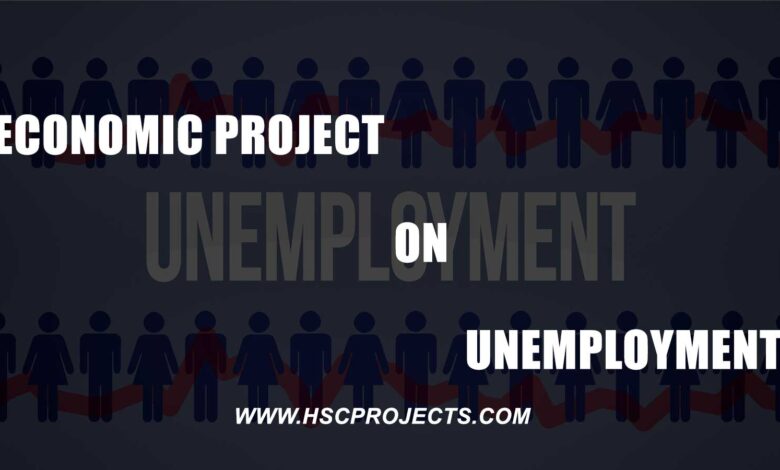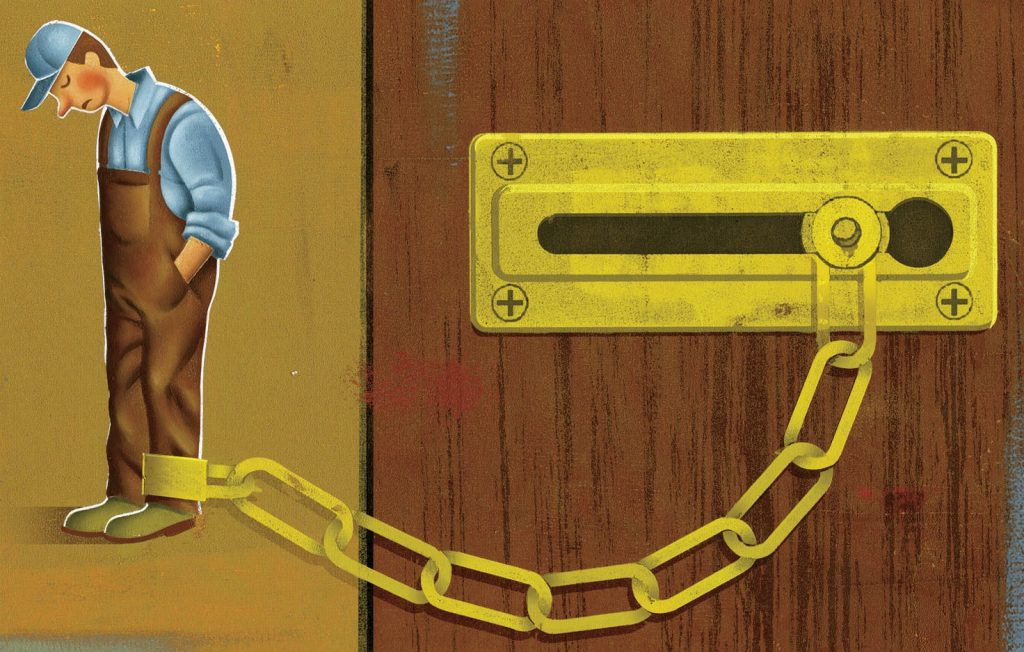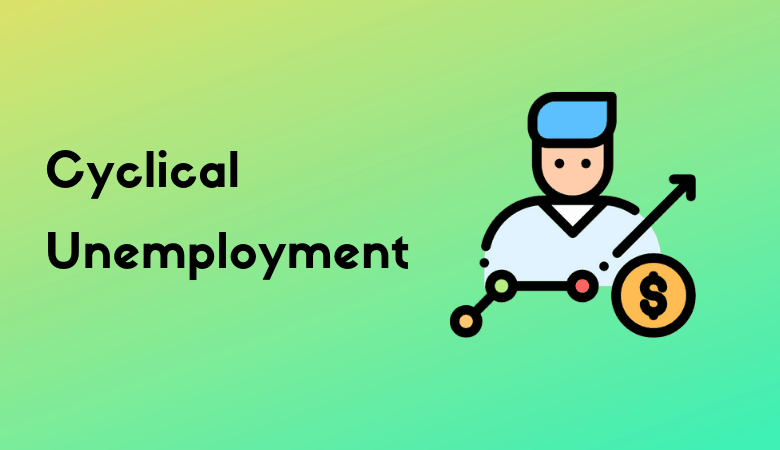
The Best Project On Unemployment In India
INTRODUCTION OF PROJECT ON UNEMPLOYMENT IN INDIA:

Unemployment, according to the OECD (Organisation for Economic Cooperation and Development ) is persons above a specified age (usually 15) not being in paid employment or self-employment but currently available for work during the reference period. There are many project on unemployment in india available. They all give information on unemployment in india project.
Unemployment is measured by the unemployment rate, which is the number of people who are unemployed as a percentage of the labor force (the total number of people employed added to those unemployed).
Unemployment can have many sources, such as the following :
New technologies and inventions the status of the economy, which can be influenced by a recession competition caused by globalization and international trade policies of government regulation and market unemployment, and the states of the economy can be influenced by a country through, for example, fiscal policy. Furthermore, the monetary authority of a country, such as the central bark, can influence the availability and cost of money through its monetary policy.
In addition to theories of unemployment a few categorizations of unemployment, are used for more precisely modeling the effects of unemployment including structural unemployment, frictional unemployment, cyclical unemployment involuntary unemployment, and classical unemployment. Structural unemployment focuses on foundational problems in the economy and inefficiencies inherent in laborers with necessary skills sets. Structural arguments emphasize cause and solution related to disruptive technologies and globalization. Discussions of frictional unemployment focus on voluntary
Decisions to work are based on individuals’ valuation of their work and how that compares to current wage rates added to the time and effort required to find a job.
Causes and solutions for frictional unemployment often address the job entry threshold and wages rate.
Psychological Effects:
- Stress
- Depression
Physical Effects:
- Sleeping Disorder (Insomnia, Sleep Apnea, Narcolepsy, etc)
- Eating Disorder (Anorexia, Bulimia, Binge Eating Disorder)
IMPACT OF COVID-19:

The COVID-19 pandemic has pushed the world into an unprecedented crisis and uncertainty, calling to expedite the implementation of the centenary declaration. The ILO was quick to recognize that the COVID-19 PANDEMIC is not just a health crisis, but equally an economic and labor market crisis. The lockdown measures adopted in most countries to prevent the spread of the pandemic restricted economic activities evidently, developing countries have faced disruptions in trade and supply chains triggering negative growth.
As early as 18 march 2020, ILO’s first monitor on COVID-19 has estimated a rise in unemployment and estimated a rise in unemployment and underemployment between 5.3 million (low scenario) and 24.7 million (high scenario) from a base level of 188 million in 2019. Footnote soon the figures have proved as highly underestimated. ILO 5th monitor on COVID-19 Impact released on 30 June 2020 suggests that the labor market recovery during the second half of 2020 will be certain and incomplete the working hour losses could range between 140 million full-time jobs and 340 million full-time jobs and 340 million full-time jobs in the last quarter of the year, depending upon the spread of the pandemic.
COST OF UNEMPLOYMENT TO THE ECONOMY:
Unemployment is universally recognized as undesirable. That is more evident than ever thanks to the covid-19 pandemic, which left 10 million Americans jobless in its first two weeks. the project on unemployment in india updates all changes post COVID-19.
- The situation is so serious that the coronavirus Aid, Relief, and Economic security (CARES) act has expanded unemployment benefits to self-employed and part-time workers through pandemic emergency unemployment Assistance, which provides up to 39 weeks of benefits beginning on or after Jan 27, 2020, and ending on or before Dec 31, 2020.
- While economists and academics make convincing arguments that there is a certain natural level of unemployment that cannot be erased, elevated unemployment imposes significant costs on the individual. The society, and the country.
- Worse yet, most of the costs are of the dead loss variety, where there are no offsetting gains to the costs that everyone must bear. Depending on how it’s measured, the unemployment rate is open to interception.
EFFECTS OF UNEMPLOYMENT:

The impact of unemployment can be felt by both the workers and the national economy and can create a ripple effect.
Unemployment causes a worker to suffer financial difficulties that may lead to emotional destruction. Where it happens, consumer spending, which is one of an economy’s key drivers of growth goes down, leading to a recession or even a depression when left unaddressed.
Unemployment results in lower purchasing power, which in turn, causes lower profits for businesses and leads to budget cuts and workforce reductions. It creates a cycle that goes on and on everyone loses in the end.
LONG-TERM UNEMPLOYMENT VS SHORT-TERM UNEMPLOYMENT:
Unemployment that lasts longer than 27 weeks even if the individual has sought employment in the last four weeks is called long-term unemployment. Its effects are far worse than short-term unemployment for obvious reasons, and the following are noted as some of its effects. A huge 56% of the long-term unemployed reported a decrease in their income.
It seems that financial problems are not the only effects of long-term unemployment as 46% of those in such a state-reported experiencing strained family relationships. The figure is relatively higher than the 39% who weren’t unemployed for as long.
Another 43% of the long-term unemployed reported a significant effect on their ability to achieve theirs. This is further discussed in this project on unemployment in India.
GOVERNMENT INITIATIVES OF PROJECT UNEMPLOYMENT IN INDIA:
1. Mahatma Gandhi National Rural Employment Guarantee Act 2005:
The government of India has taken several steps to decrease the unemployment rates like launching the Mahatma Gandhi National Rural Employment Guarantee Scheme which guarantees 100-day employment to an unemployed person in a year. It has been implemented in 200 of the districts and further will be expanded to 600 districts. In exchange for working under this scheme, the person is paid 150 per day.
Apart from the employment exchange, the government of India publishes a weekly newspaper titled employment news. It comes out every Saturday evening and gives detailed information about vacancies for government jobs across India. Along with the list of vacancies, it also has the notification for various government exams and recruitment procedures for government jobs.
2. Steps Taken On Disguised Unemployment:
Agriculture is the most labor-absorbing sector of the economy. In recent years, there has been a decline in the dependence of the population on agriculture partly because of disguised unemployment. Some of the surplus labor in agriculture has moved to either the secondary or the tertiary sector, and various new services are now appearing like biotechnology, information technology, and so on. The government has taken steps in these sectors for the disguised unemployed people in these methods.
3. National Career Service Scheme:
The Government of India has initiated a National career service scheme whereby a web portal named National career service portal (www.ncs.gov.in) has been launched by the ministry of labor and employment (India). Through this portal, job seekers and employers can avail the facility of a common platform for seeking and updating job information. Not only private vacancies, but contractual jobs available in the government sector are also available on the portal.
4. National Rural Employment Programme:
The national rural employment program offers people from rural areas an equal shot at job opportunities across the nation. The growing disparity in terms of personal finance between those in rural areas moving to the urban areas makes urban management difficult. The opportunities in the rural areas especially in times of drought and other such scarcities.
5. Deen Dayal Antyodaya Yojana:
The Deen Dayal Antyodaya Yojana is a scheme that aims to help the poor by providing them with industrially recognized skills. The scheme is implemented by the ministry of rural development. The purpose of the scheme is to eradicate both urban and rural poverty from the country by providing necessary skills to individuals that help them find well-paying job opportunities.
This is aimed to be achieved through skill training and skill upgrading which enables the poor to get self-employed, elevate themselves above the poverty line, be eligible for bank loans, etc.
NEWS AND STATISTICS ABOUT UNEMPLOYMENT IN INDIA:
- The world economy struggling with rising unemployment
- 50 lakh job’s lost in 2 years after note ban
- Unemployment has risen steadily post 2011, says report
CAUSES OF UNEMPLOYMENT IN INDIA:

The following are the main causes of unemployment :
Caste System:

In India, the caste system is prevalent. The work is prohibited for specific castes in some areas. In many cases, the work is not given to the deserving candidates but given to the person belonging to a particular community so this gives rise to unemployment.
Slow Economic Growth:
Indian economy is underdeveloped, and the role of economic growth is very slow. This slow growth fails to provide enough unemployment opportunities to the increasing population.
Increase In Population:

The constant increase in population has been a big problem in India. It is one of the main causes of unemployment is 11.1% in 10th
Agriculture – A Seasonal Occupation:
Agriculture is underdeveloped in India. It provides seasonal employment. A large part of the population is dependent on agriculture. But agriculture being seasonal provides a workforce for a few months. So this gives rise to unemployment.
Joint Family System:

In big families having a big business, many such persons will be available who do not do any work and depend on the joint family income.
Many of them seem to be working, but they do not add anything to production, so they encourage disguised unemployment.
Fall Of Cottage & Small Industries:
Industrial development hurt the cottage and small industries. The production of cottage industries began to fall and many artisans became unemployed.
Slow Growth Of Industrialization:
The rate of industrial growth is slow though the emphasis is laid on industrialization yet the avenues of employment created by industrialization are very few.
Causes Of Under Employment:
Inadequate availability of means of production is the main cause of underemployment. People do not get to the shortage of electricity, coal, and raw materials
Defective Planning:
Defective planning is one of the causes of unemployment. There is a wide gap between supply and demand for labor. No plan had formulated any long term scheme for the removal of unemployment.,
Expansion Of Universities:
The number of universities has increased manifold. There are 385 universities. As a result of this educated unemployment or white-collar unemployment has increased.
Immobility Of Labour:

The mobility of labor in India is low. Due to attachment to the family, people do not go too far off areas for jobs. Factors like language, religion, and climate are also responsible for low mobility. Immobility of labor adds to unemployment
TYPES OF UNEMPLOYMENT:
Type A:
- Cyclical
- Demand Deficit
- Structural
- Regional
- Classical
- Seasonal
- Frictional
- Voluntary
- Natural Rate
- Structural & Labour
Type B:
- Geographical
- Industrial
- Occupational
There are several types of unemployment each one defined in terms of cause and severity in this project on unemployment in india.
Cyclical Unemployment:

Cyclical unemployment exists when individuals lose their jobs as a result of a downturn in aggregate demand. If the decline in aggregate demand is persistent, it is called either demand deficient, general, or Keynesian unemployment. For example, unemployment levels of 3 million were reached in the UK in the last two recessions, between 1980 and 1982, and between 1990 and 1992. In the most recent recession of 2008 -20110, unemployment levels rose to 2.4 m in the last quarter of 2009, and are likely to peak at over 2.5 m during 2010.
Demand Deficit Unemployment:
This is caused by a lack of aggregate demand, with insufficient demand to generate full employment.
Structural Unemployment:
Structural unemployment occurs when certain industries decline because of long term changes in market conditions for example, over the last 20 years UK motor vehicle production has declined while core production in the far east has increased, creating structurally unemployed core workers Globalisation is an increasingly significant cause of structural unemployment in many countries.
Regional Unemployment:
When structural unemployment affects local areas of an economy, it is called ‘regional’ unemployment. For example, unemployed car workers in the midlands and E8sex add to regional unemployment in these areas. In the UK, the further we move away from the affluent southeast the greater the unemployment rate, geographical immobility makes regional differences more extreme.
Classical Unemployment:
Classical unemployment is caused when wages are too high. The explanation of unemployment dominated economic theory before the 1930s when workers themselves were blamed for not accepting lower wages, or for asking for too high a wage. Classical unemployment is also called real wage unemployment.
Seasonal Unemployment:

Seasonal unemployment exists because certain industries only produce or distribute their products at certain times of the year. Industries where seasonal unemployment is common include farming tourism and construction.
Frictional Unemployment:
Frictional unemployment, also called search unemployment, occurs when workers lose their current job and are in the process of finding another one. There may be little that can be done to reduce this type of unemployment, other than providing better information to reduce the search time. This suggests that zero unemployment is impossible at any one time because some workers will always be in the process of changing jobs.
Voluntary Unemployment:

Voluntary unemployment is defined as a situation when workers choose not to work at the current equilibrium wage rate for one reason or another worker may elect not to participate in the labor market. There are several reasons for the existence of voluntary unemployment including excessively generous welfare benefits and high rates of income tax. Voluntary unemployment is likely to occur when the equilibrium wage rate is below the wage necessary to encourage individuals to supply their labor.
The Natural Rate Of Unemployment:
It is defined as the rate of unemployment that still exists when the labor market is in equilibrium and includes seasonal frictional and voluntary unemployment. The US economist million fried men first used the concept to help explain the connection between unemployment and inflation. The fried man argued that if unemployment fell below the natural rate there would be an increase in the rate of inflation.
Structural Unemployment & Labour Immobility:
Labour immobility is likely to increase structural unemployment this is because the industries that are growing and need labor, often called sunrise industries are not necessarily able to employ the same workers who have been displaced in the declining, sunset industries
There are three types of labor immobility
1. Geographical Immobility:
Geographical immobility occurs when workers are not willing or able to move from region to region or town to town. Geographical mobility is made worse by immense house price variation between regions. It may be extremely difficult for workers in Yorkshire to sell them and buy an equivalent one in London.
Other factors also contribute to geographical immobility, such as strong social and family ties, and parents being unwilling to disrupt their children’s education by changing school the stresses of moving home can also be a deterrent to mobility for some.
2. Industrial Immobility:
Industrial immobility occurs when workers do not move between industries such as moving from employment in the motor industry to employment in the insurance industry. Industrial immobility has affected the UK and many other industrial countries, as the growth of service industries and the decline of manufacturing industries have increased the need for mobility.
3. Occupational Immobility:
Occupational immobility occurs when workers find it difficult to change jobs within an industry; for example, it may be tough for a doctor to retain to be a dentist. Industrial and occupation immobility is most likely to happen when skills are not transferable between industry and job.
Information failure also contributes to labor immobility because workers may be immobile because they do not know where all the suitable jobs for them are.
A resulting problem with labor market immobility is that it can create regional unemployment, which is a type of structural unemployment. This means that a change in the structure of an industry leaves some people unable to respond by changing the job industry or location and as a result, they remain temporarily or permanently unemployed.
BIBLIOGRAPHY:
- https :// link.springer.com/article/10.1007/s41027-020-00255-0
- https : // www.economicshelp .org/macroeconomics/unemployment/causes/
- https :// www.investopedia.com/terms/u/inemp;oyment.asp
- https://en.wikipedia.org/wiki/Unemployment_in_India
CERTIFICATE:
This is to certify that class —of—-school, has completed his project under my school supervision. He has taken proper care and shown the utmost sincerity in the completion of this project on unemployment in india. I certify that this project is up to my expectations and as per the guidelines issued by CBSE.
ACKNOWLEDGEMENT:
I would like to express my special thanks of gratitude to my teacher as well as our principal who gave me this golden opportunity to do this wonderful project on unemployment in india, the topic which also helped me in doing a lot of research and I came to know about so many new things. I am thankful to them. Secondly, I would also like to thank my family and friends who helped me a lot in finalizing this project within the limited time frame.
DOWNLOAD PDF OF THE PROJECT

Password: hscprojects.com
In order to download the PDF, You must follow on Youtube. Once done, Click on Submit
Follow On YoutubeSubscribed? Click on Confirm
Download The Best Project On Unemployment In India PDF






